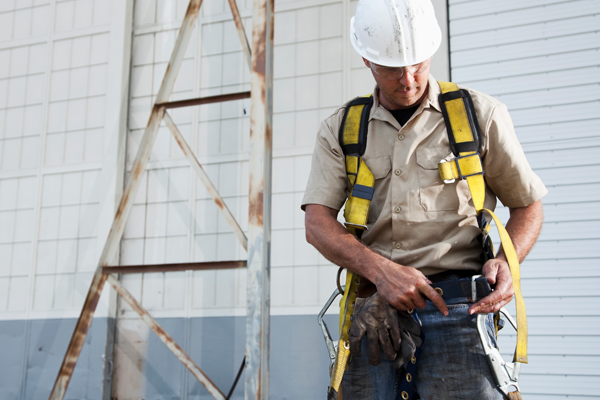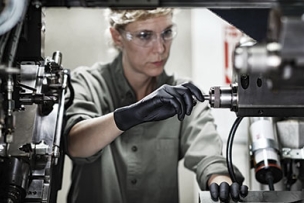Harness Comfort
Comfort and fit affect the safety and use of a harness – influencing compliance. If fall protection equipment is difficult to don and hard to adjust, it won’t be used. With comfort in mind, workers use several different types of harnesses but the majority prefer full-body harnesses with stretchable webbing that allows them to flex and bend.
Harness Features A full-body harness includes hardware, webbing and pads with specific functions.
Hardware must be sturdy, but not oversized and awkward. At the same time, the hardware should easily attach to connecting devices. For example, the back D-rings on some harnesses are so small that hooking a lanyard can be a tricky process. Harness hardware must also be smooth because it can pose a hazard if it has sharp edges that cut into harness webbing or dig into the skin in the event of a fall.
Hardware construction is an important feature specifically in friction buckles. If friction buckles are not spring-loaded, they can easily begin to loosen once the harness has been adjusted to fit properly. Also, be aware of hardware with exposed springs, especially on friction buckles. These can easily be disabled or dislocated.
Webbing varies drastically from brand to brand. Look for sturdy webbing with tightly-woven yarn that slides through hardware without snagging. Once webbing is cut, burned, frayed, etc., the harness must be taken out of service.
When choosing webbing, keep in mind that it should meet the ANSI standard of 5,000 lbs. tensile strength. Stitching should have enough strength that it does not rip away during a fall, and the webbing should endure traditional abrasion tests without fraying and puckering.
Since webbing will be used in sun, heat and moisture over extended periods of time, it should resist natural weather effects. Similarly, in an electrical environment, webbing must resist conductivity, and in a harsh chemical environment, webbing must resist toxic chemical fumes and splashes.
Padding should be pliable and easy to adjust to ensure a comfortable fit. Like webbing, padding must withstand harsh weather and maintain its shape. Some padding can become brittle in cold weather, so look for padding with breathable fabric and durable construction.









Talk to Us!
Leave a reply
Your email address will not be published. Required fields are marked *